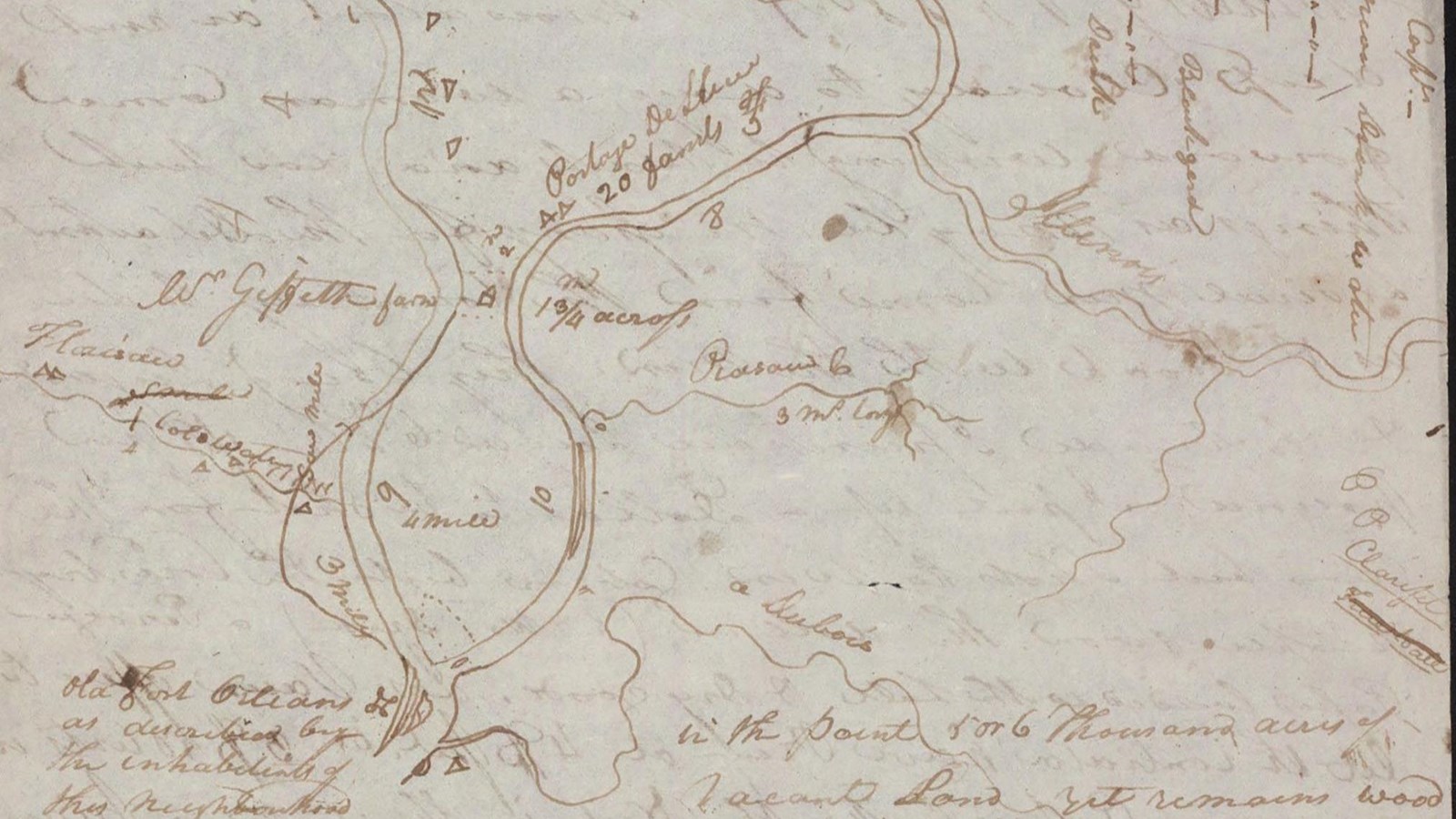Last updated: December 13, 2023
Place
Camp Dubois, Illinois

Beinecke Rare Book and Manuscript Library, Yale
Benches/Seating, Gifts/Souvenirs/Books, Historical/Interpretive Information/Exhibits, Parking - Auto, Parking - Bus/RV, Picnic Shelter/Pavilion, Restroom, Restroom - Accessible, Restroom - Family, Scenic View/Photo Spot, Wheelchair Accessible
“The mouth of the River Dubois is to be considered as the point of departure.”—Meriwether Lewis, May 14, 1804
On a cold December day in 1803, William Clark and the expedition’s recruits set about clearing land and cutting logs for their winter camp. The party spent five months at Camp Dubois making final preparations for their long journey up the Missouri River.
Clark chose the site, on the east side of the Mississippi River at its confluence with the Missouri, in part to fulfill treaty obligations. Conditions of the Louisiana Purchase required Lewis and Clark to remain within American territory until the land officially transferred from France to the United States on March 10, 1804. The location was also convenient to St. Louis and Cahokia Courthouse. Today, the exact location of the camp is unknown due to shifts in the Missouri and Mississippi Rivers.
Clark spent most of the winter at Camp Dubois supervising and training the recruits. His journals frequently mention French and Indigenous people stopping at Camp Dubois. They sometimes brought meat or other provisions to trade. Often they stayed and exchanged stories about communities upriver.
Lewis spent much of the winter in St. Louis, meeting with fur traders and others who had experience on the Upper Missouri.
In the late afternoon of May 14, 1804, Clark and forty-one men set out from Camp Dubois. Curious onlookers along the riverbank may have watched the keelboat and two pirogues (a type of canoe) depart. They would have been accustomed to seeing vessels traveling up and down the Missouri. Did they know the political significance of this diplomatic mission of colonization? Did they have any idea of what it would mean for the Indigenous people who lived along the Missouri and beyond?
Lewis and Clark NHT Visitor Centers and Museums
This map shows a range of features associated with the Lewis and Clark National Historic Trail, which commemorates the 1803-1806 Lewis and Clark Expedition. The trail spans a large portion of the North American continent, from the Ohio River in Pittsburgh, Pennsylvania, to the mouth of the Columbia River in Oregon and Washington. The trail is comprised of the historic route of the Lewis and Clark Expedition, an auto tour route, high potential historic sites (shown in black), visitor centers (shown in orange), and pivotal places (shown in green). These features can be selected on the map to reveal additional information. Also shown is a base map displaying state boundaries, cities, rivers, and highways. The map conveys how a significant area of the North American continent was traversed by the Lewis and Clark Expedition and indicates the many places where visitors can learn about their journey and experience the landscape through which they traveled.
